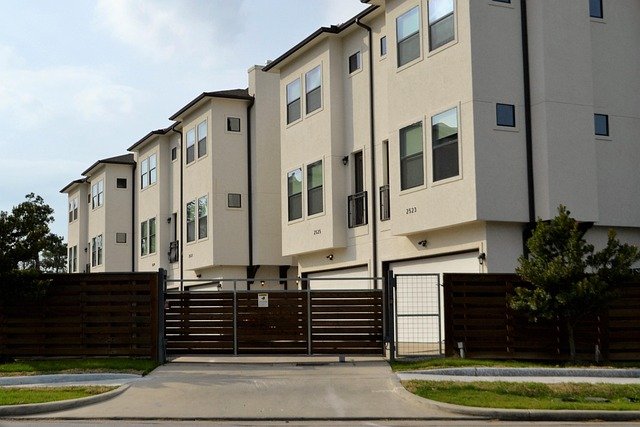Melbourne Real Estate Overview: How House Prices Are Shifting in 2025
Melbourne’s property market in 2025 is showing signs of adjustment, with prices responding to interest rates, supply constraints, and buyer sentiment. This article breaks down how house values are shifting across key suburbs and what it means for both buyers and sellers.

What Are the Key 2025 Melbourne Housing Market Trends?
Melbourne’s housing market in 2025 reflects a complex interplay of supply constraints and buyer sentiment shifts. Auction clearance rates have fluctuated between 55-70% across different months, indicating a more balanced market compared to the seller-dominated conditions of previous years. First-home buyer activity has increased in outer suburbs, supported by government incentives and relatively lower entry prices. Meanwhile, established areas closer to the CBD are experiencing longer selling periods, with vendors often adjusting expectations to meet current market conditions.
The rental market continues to influence purchase decisions, with rental yields becoming more attractive in certain pockets of Melbourne. Investment activity has shown signs of recovery, particularly in areas with strong infrastructure development or transport improvements planned for the coming years.
How Do Regional Variations in Melbourne Property Prices Affect Buyers?
Melbourne’s property prices vary significantly across different regions, creating distinct opportunities and challenges for buyers. Inner-city suburbs like South Yarra and Richmond maintain premium pricing, with median house prices often exceeding $1.8 million, though growth has moderated compared to pandemic-era peaks. Middle-ring suburbs including Glen Waverley and Camberwell continue to attract families, with median prices typically ranging from $1.2 to $1.6 million.
Outer suburbs present more affordable entry points, with areas like Cranbourne, Pakenham, and Melton offering median house prices between $600,000 and $800,000. These regions have seen steady interest from first-home buyers and young families seeking larger properties. Coastal areas such as the Mornington Peninsula show seasonal variation, with lifestyle buyers driving demand despite higher price points.
The northern growth corridors, including suburbs around Whittlesea and Hume, continue developing with new estates providing options for buyers seeking modern homes with contemporary amenities.
Which Economic Factors Are Affecting Home Values in Melbourne?
Interest rates remain the most significant economic factor influencing Melbourne home values in 2025. Current cash rate settings have stabilized borrowing costs, though they remain elevated compared to the ultra-low rates experienced during 2020-2021. This has affected borrowing capacity for many buyers, contributing to more selective purchasing behavior and extended settlement periods.
Employment conditions across Melbourne’s key industries, including finance, healthcare, and technology, continue supporting housing demand. Population growth, driven by both interstate migration and international arrivals, provides underlying support for housing demand, though the pace has moderated from previous peaks.
Construction costs and material availability continue impacting new home development, influencing both new builds and renovation projects. Supply chain improvements have stabilized costs somewhat, though they remain elevated compared to pre-2020 levels.
Real Estate Agent Services and Fees Comparison
| Agent/Agency | Commission Rate | Services Included | Additional Fees |
|---|---|---|---|
| Ray White Melbourne | 2.0-2.5% + GST | Marketing, photography, auctions | $2,000-4,000 marketing |
| Jellis Craig | 2.0-2.2% + GST | Full service, styling consultation | $3,000-5,000 marketing |
| Marshall White | 2.2-2.8% + GST | Premium marketing, styling | $4,000-8,000 marketing |
| Barry Plant | 1.8-2.3% + GST | Standard marketing package | $2,500-4,500 marketing |
| Harcourts Melbourne | 2.0-2.4% + GST | Photography, online marketing | $2,000-4,000 marketing |
Prices, rates, or cost estimates mentioned in this article are based on the latest available information but may change over time. Independent research is advised before making financial decisions.
What Should Sellers Consider When Pricing Their Property?
Sellers entering Melbourne’s 2025 market need realistic pricing strategies based on recent comparable sales and current market conditions. Properties priced competitively from launch typically achieve better outcomes than those requiring multiple price reductions. Professional appraisals from multiple agents can provide valuable insights into appropriate pricing ranges.
Presentation becomes crucial in a more selective market, with styling, photography, and marketing quality directly impacting buyer interest. Properties requiring significant maintenance or updates may face additional pricing pressure, making pre-sale improvements a consideration for maximizing returns.
Timing remains important, with spring traditionally offering stronger buyer activity, though market conditions can override seasonal patterns.
Melbourne’s property market in 2025 presents both opportunities and challenges for buyers and sellers. Understanding regional price variations, economic influences, and current market trends provides the foundation for making informed property decisions. While the market has evolved from the rapid growth periods of recent years, Melbourne’s fundamental appeal as a liveable city with diverse housing options continues supporting long-term property values across its varied suburbs and regions.




